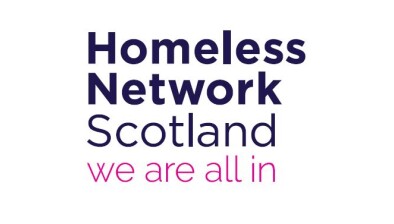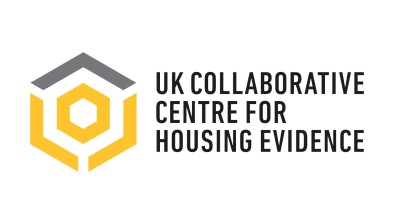Blog: Temporary means temporary - transforming the use of temporary accommodation

Jon Sparkes blogs on the Scottish Government’s approval of the Homelessness and Rough Sleeping Action Group’s temporary accommodation recommendations and charts progress on final report on ending homelessness for good.
I am delighted to begin this blog by confirming that this week, Kevin Stewart, Minister for Local Government and Housing has accepted in principal the recommendations from the Homelessness and Rough Sleeping Action Group on how to transform temporary accommodation.
This was the culmination of the work, in this area, I’ve previously outlined and builds on the recommendations we have previously made on ending rough sleeping. The proposals are backed up by robust research from Heriot Watt University and Anna Evans consultancy on how temporary accommodation is being used across the country and ensures the plans are realistic and achievable.
We have put forward a comprehensive package which will reduce the number of people who are placed in temporary accommodation, and will improve the experiences of those who do use this type of accommodation temporarily as part of their homelessness journey.
Building more flexibility into the housing options systems will mean that, for some people, the homelessness system could be bypassed altogether. Councils could make, better use of the private rented sector, allow victims of domestic abuse to stay in their homes wherever possible, and address housing issues for people who go to hospital or prison for a short period without ending tenancies.
For others, when temporary accommodation is used and where it is sensible, allowing people to remain there if they wish to by converting to long-term tenancies rather than being moved on again.
The day that people go into temporary accommodation, the right support needs to be in place to help them through the process and out the other side of homelessness. We need to empower people and those working directly with them by giving each person a personalised plan for their journey towards settled housing, reviewing their situation regularly, and making sure those working directly with them are equipped to make decisions and provide the right support quickly without unnecessary bureaucracy.
We need to make sure that the ‘Housing Options’ of preventing homelessness is supported by effective legislation to give clarity and priority to this approach. We need to think flexibly about how we support people at risk of homelessness, including models such as community hosting.
Where homelessness can’t be prevented, we need to make sure that people get the right support and that the quality of accommodation is good enough. Shelter and CIH have done some good work to develop a set of standards for temporary accommodation. These should act as a springboard to a robust and enforceable set of standards for Scotland. And using temporary accommodation which is considered ‘unsuitable’ should be limited to emergencies only, with a maximum time limit for any homeless household of seven days.
The final section of the recommendations centred on how changes to the structure and supply of temporary accommodation could be funded. This has been one of the most challenging areas to focus on because of the complexity of funding mechanisms and because they cut across both reserved and devolved policy areas. Nevertheless, thanks to the leadership of John Mills of Fife Council and ALACHO, I believe that the proposals put forward will tackle the financial barriers on people living in temporary accommodation and make the system fairer by shifting the responsibility to pay for accommodation from individuals onto their local authority.
This could be managed by reducing costs to LHA levels, this would leave a funding gap of £50m which could be funded through devolution of full housing benefit amount to the Scottish Government. Devolution of the funding would be the optimum option but regardless of where the funding comes from the recommendation will be that the burden of rent is on councils not individuals.
With the previous recommendation, that local authorities produce a five-year plan to move to a rapid re-housing transition system, the funding requirement for temporary housing would reduce over time.
Temporary accommodation is an incredibly complex system which is applied in different ways across Scotland’s 32 local authorities. The principles outlined in the recommendations will now be taken on by the Homelessness Prevention Strategy Group and the role of CoSLA in co-chairing this group will be vital in making these changes a reality in the near future.
The Action Group is now well on its way to producing our final set of recommendations on ending homelessness in Scotland for good. It will come as no surprise that many of the proposals will reflect those already made, such as empowering frontline support, person centred approaches and preventing homelessness where it can be predicted.
We are exploring how the responsibility for prevention can be expanded across relevant public services, such as public health where there is a core rationale for making homelessness a priority and giving Health and Social Care Partnerships mandatory responsibilities for homelessness services.
Another area where early intervention could prevent homelessness is children’s services. For example, if local authorities were required to address child poverty as a primary driver of homelessness then more families could be diverted from that path. This could include the role of education services and ensuring relevant training is undertaken to spot potential cases of concern.
Other areas under consideration include establishing a specific code of practice within the refreshed code of guidance with a view to professionalising housing officials in a similar way that those working in care assessments are currently, including minimum levels of training and reviews on standards. We are also looking at how we could ensure better tenancy sustainment, including early intervention if someone is at risk of losing their tenancy.
It almost goes without saying that part of the solution to ending homelessness is having enough homes for everyone who needs one. The current building programme, which the Scottish Government has pledged will see 50,000 affordable homes built by the end of this parliament including 30,000 for social rent. Our current thinking is to recommend that this be extended and that innovative funding models, such as the Scottish Investment Bank, be looked at and that support be given for the testing of new models of commissioning to ensure funding is driven by ending homelessness in each location.
There are areas that we have not yet tackled head on such as the role the benefit system could have in supporting people out of homelessness or becoming homeless in the first place. The specific issues around migrant homelessness and people with no recourse to public funds also needs considerable thought and of course these two substantial challenges are largely reserved matters and so we can only suggest to Scottish Government how they work with the UK Government to address these issues.
Finally, we are looking at the role Scottish Government could have in shifting public perceptions on homelessness, which are often that it is an individual’s problem rather than a systemic societal problem. A programme of communications could begin to remove the label or stigma of homelessness as being someone’s fault or only seen as rough sleeping to a wider view of people not having adequate housing and the role society has in tackling this.
This final piece of work will build on everything we’ve learnt during this eight-month journey, not least the discussions with sector colleagues and the perspective of people who know best what it’s like to go through homelessness. In particular, the perspective we have gained through the Aye We Can group of people with personal experience of homelessness whose insight has been invaluable in shaping our thinking throughout the whole process.
This blog was originally published on the Crisis website.







